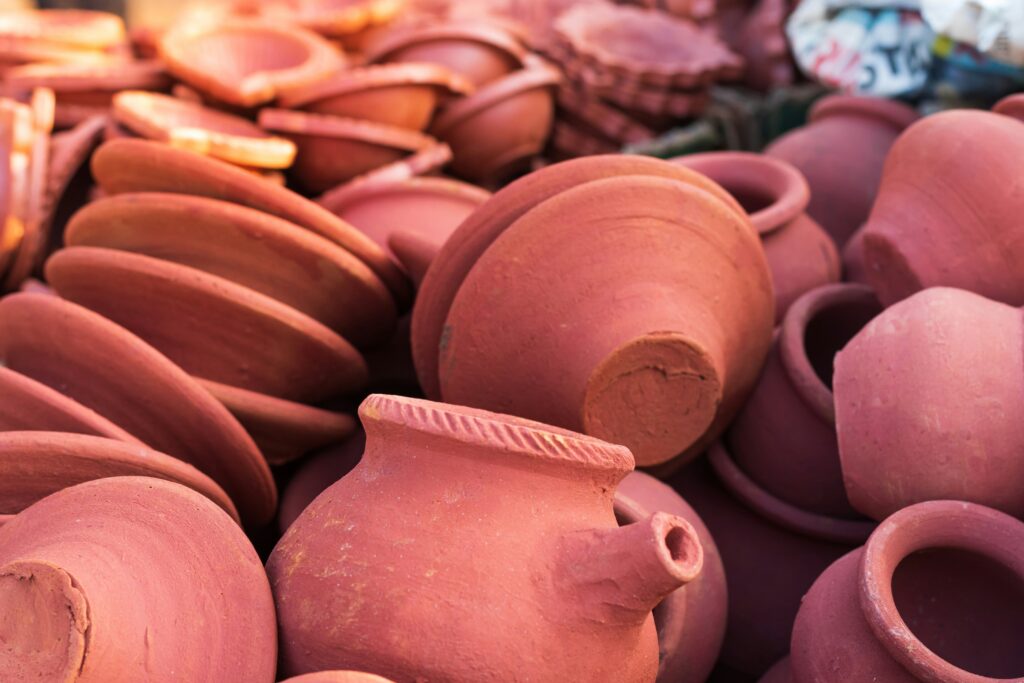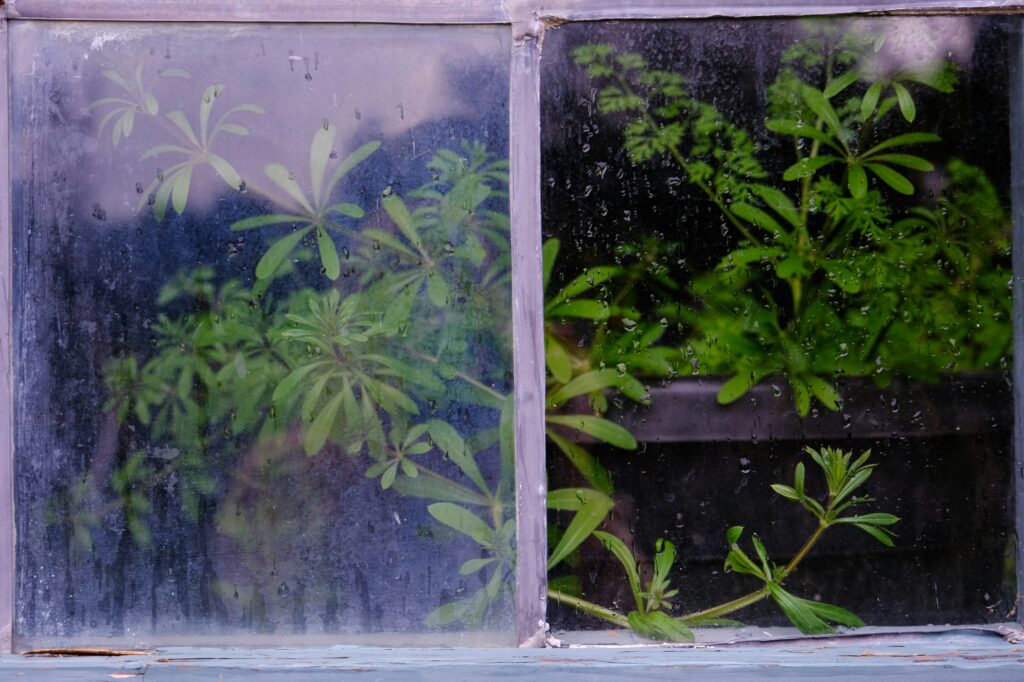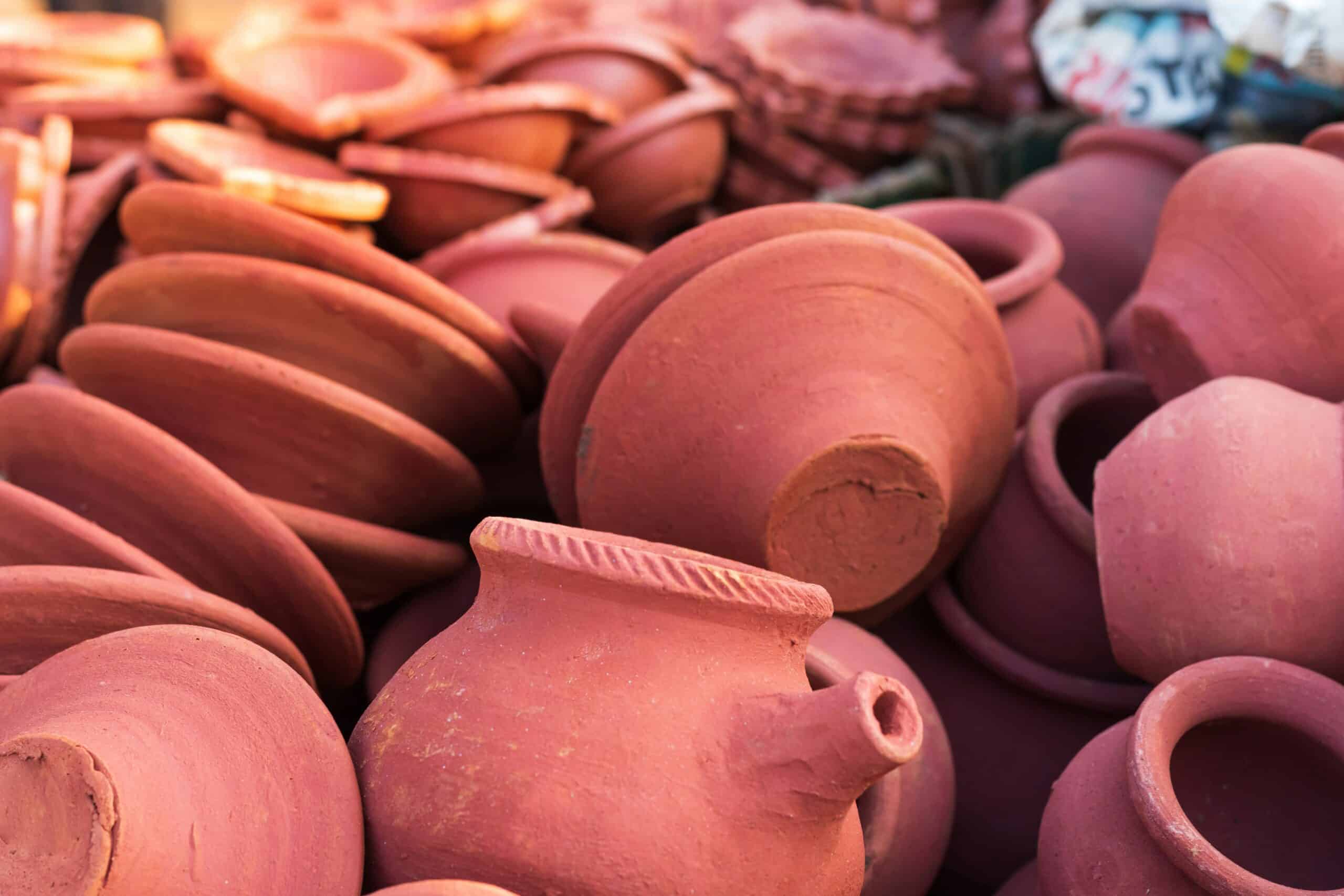Anúncios
This comprehensive guide intends to shed light on this perennial topic, addressing the crucial question – ‘Which is better for my plants, Plastic or Clay containers?’

We’ll delve deep into the merits and demerits of both types of pots, aiming to provide you with an informed perspective. From durability and heat retention to cost-effectiveness and environmental impact, several aspects will be discussed. By dissecting these attributes, we strive to help you make a wise decision for your plant’s well-being and growth.
Anúncios
In addition to analyzing the properties of plastic and clay pots, we also touch upon their suitability for various kinds of plants. This insight will aid you in matching your plant’s specific needs with the right type of pot, ensuring optimal growth and longevity. We understand that every plant has its unique requirements and one size definitely doesn’t fit all in the world of gardening! 🌱
Finally, you’ll find practical tips on how to effectively use these containers, irrespective of their material. This comprehensive comparison is intended to empower you with knowledge, ultimately helping you elevate your gardening game. Buckle up for this enlightening journey into the world of plant potting and let’s unravel the mystery together. 🌿
Anúncios
Plastic Pots: The Pros
Plastic containers are widely favored in both indoor and outdoor gardening for their lightweight, durable, and moisture-retentive qualities. Whether you’re managing a small balcony garden or maintaining a large-scale nursery, plastic pots offer several practical benefits:
- Lightweight and Easy to Handle: Plastic pots are easy to carry, making them ideal for gardeners who frequently rearrange plants, repot, or move plants indoors and outdoors with the seasons.
- Cost-Effective: Typically more affordable than clay or ceramic alternatives, plastic containers are a budget-friendly choice, especially for those needing many pots or growing on a commercial scale.
- Moisture Retention: Plastic is non-porous, which means it retains water well. This is particularly useful in dry or hot environments where evaporation is a concern, or for plants that prefer consistently moist soil.
- Weather-Resistant: Plastic pots are less likely to crack or degrade in cold temperatures compared to clay pots, making them more resilient in climates with harsh winters.
Plastic Pots: The Cons
Despite their many benefits, plastic pots do have some limitations that may affect plant health and long-term usage:
- Poor Breathability: Because plastic is non-porous, it doesn’t allow air exchange through the pot walls, which can lead to compacted soil and reduced oxygen availability for plant roots.
- Risk of Overwatering: The moisture-retentive nature of plastic can backfire if drainage holes are inadequate or watering is too frequent, increasing the risk of waterlogged soil and root rot.
- Heat Retention: Dark-colored plastic pots can heat up quickly in the sun, potentially raising the soil temperature and stressing sensitive roots.
- UV Degradation: Over time, exposure to direct sunlight can cause plastic to become brittle and prone to cracking.
- Environmental Impact: Plastic pots are less eco-friendly unless recycled properly, and some are made from materials that degrade into microplastics.
Clay Pots: The Pros
Clay pots, particularly those made from terracotta, have been a traditional favorite among gardeners for generations. They offer several natural advantages that are particularly well-suited for certain plant types and growing conditions:
- Breathable and Porous: The porous walls allow for air and moisture exchange, preventing waterlogging and promoting healthy root respiration.
- Ideal for Dry-Loving Plants: Clay pots wick moisture away from the soil, making them perfect for succulents, cacti, Mediterranean herbs, and other plants that thrive in drier conditions.
- Stability and Support: Heavier than plastic, clay pots are less likely to tip over, making them ideal for top-heavy plants or windy outdoor areas.
- Natural Aesthetic: Their warm, earthy tones and rustic texture add a timeless charm to any garden or indoor display.
- Soil Cooling: Clay helps regulate soil temperature, keeping roots cooler during hot weather and reducing heat stress in summer.
Clay Pots: The Cons
While clay pots have many strengths, they also come with a few drawbacks to consider:
- Fragility: Clay can crack or shatter if dropped or exposed to freeze-thaw cycles while retaining moisture.
- Weight: Especially in larger sizes, clay pots can be heavy and cumbersome to move, which may be a challenge for older gardeners or those with limited mobility.
- Frequent Watering Needed: Because they draw moisture away from the soil, plants in clay pots often need to be watered more frequently—especially in hot or windy environments.
- Staining and Salt Build-Up: Over time, mineral deposits from water or fertilizers can accumulate on the outside of the pot, leaving visible white stains.
- Higher Cost: Quality clay pots are generally more expensive than plastic and may require careful handling and storage to extend their lifespan.
Which Should You Choose?
Ultimately, the decision between plastic and clay pots depends on your gardening goals, environment, budget, and the specific needs of your plants.
- Choose plastic pots if you need something lightweight, affordable, moisture-retentive, and low-maintenance.
- Opt for clay pots if your focus is on breathability, aesthetics, and growing plants that prefer drier soil.
For many gardeners, a combination of both types provides the best of both worlds—clay pots for succulents and herbs, plastic containers for thirsty tropicals and moisture-sensitive houseplants.
✅ Lightweight and Easy to Handle
Plastic pots are ideal for situations where mobility is important. Their lightweight nature makes it easy to:
- Move plants indoors during seasonal changes
- Rearrange layouts
- Transport large numbers of plants with minimal effort
✅ Cost-Effective
Plastic pots are generally cheaper than clay pots, making them perfect for:
- Budget-conscious gardeners
- Commercial growers
- Beginners who need to purchase multiple containers at once
✅ Water Retention
Unlike porous clay, plastic is non-porous, meaning it retains moisture much more efficiently. This makes plastic pots especially beneficial in:
- Hot or dry climates, where water evaporates quickly
- For plants that prefer consistent moisture, such as ferns or peace lilies
- For gardeners who may not water their plants daily
✅ Weather-Resistant
Plastic does not crack as easily under freezing temperatures or sudden weather changes, making it a reliable choice for:
- Outdoor use in variable climates
- Overwintering tender plants
Plastic Pots: The Cons
While plastic pots are practical, they also have some downsides:
- Poor Breathability: The non-porous surface can lead to waterlogged soil and reduced oxygen flow to roots, increasing the risk of root rot.
- Environmental Impact: Plastic is less eco-friendly unless recycled properly.
- Sun Degradation: Prolonged exposure to sunlight can cause plastic to become brittle and fade over time.
- Less Aesthetic Appeal: Many gardeners find plastic less visually appealing than natural materials like clay or wood.
Plastic Pots: The Cons
Despite their benefits, plastic pots also have their drawbacks. Their non-porous nature can lead to waterlogging and root rot if not properly managed. Additionally, plastic pots do not breathe well, which can lead to overheating in the warmer months. Over time, exposure to the sun can also cause plastic pots to become brittle and crack, which can negatively impact the health of your plant.
Clay Pots: The Pros and Cons
Clay pots—especially those made from classic terracotta—have long been a favorite among gardeners for their natural appearance, breathability, and plant-friendly properties. While they offer a different set of characteristics compared to plastic containers, their advantages are especially well-suited for specific plants and growing conditions. However, they do come with a few considerations that need to be weighed carefully.
Clay Pots: The Pros
✅ Durable and Breathable
Clay pots are made from fired natural clay, giving them exceptional strength and long-term durability when used in proper conditions. Their porous walls allow air to reach plant roots more easily, facilitating healthy gas exchange between the soil and the surrounding environment. This natural ventilation contributes to stronger, more robust root systems.
✅ Porous and Moisture-Regulating
One of the most significant advantages of clay pots is their ability to absorb excess moisture. The walls of the pot draw water out of the soil, reducing the likelihood of overwatering and preventing root rot, especially in plants that dislike “wet feet.” This makes them an ideal choice for:
- Succulents
- Cacti
- Mediterranean herbs like rosemary, thyme, and lavender
✅ Heaviness Provides Stability
Due to their weight, clay pots provide more stability than lightweight plastic containers, making them excellent for:
- Top-heavy plants (e.g., rubber plants, fiddle leaf figs)
- Outdoor settings where wind or accidental bumps might otherwise topple lighter pots
✅ Aesthetic Appeal
With their warm, rustic look and natural tones, terracotta pots enhance the visual appeal of gardens, patios, and indoor spaces. Their timeless design complements a variety of settings, from traditional to modern minimalist.
✅ Temperature Insulation
Clay has insulating properties that help moderate soil temperature, keeping roots cooler in hot weather. This can protect more delicate plants from heat stress during the summer months.
Clay Pots: The Cons
Despite their many strengths, clay pots do have some limitations:
❌ Fragility and Breakability
While sturdy, clay pots are still susceptible to cracking or breaking if dropped or knocked over. They are also vulnerable to damage from:
- Frost (as absorbed moisture can freeze and expand, causing cracks)
- Impact shocks (from being handled roughly or tipped over)
❌ Heavier and Less Portable
Their weight, while beneficial for stability, can be a drawback when it comes to mobility. Large clay pots can be cumbersome to move, especially when filled with soil and plants.
❌ Dries Out Soil Quickly
The same porous nature that helps prevent overwatering can also lead to rapid soil drying, requiring more frequent watering. This can be a challenge in:
- Hot or dry climates
- Indoor environments with low humidity
- For plants that prefer consistently moist soil
❌ Cost and Availability
Clay pots are generally more expensive than plastic, especially for larger sizes or decorative designs. Their weight and fragility can also lead to higher shipping costs if ordered online.
When to Choose Clay Over Plastic
Clay pots are ideal when:
- You’re growing drought-tolerant plants
- You want to prevent overwatering
- Stability and aesthetics are a priority
- You’re in a climate that allows for natural drying cycles without excessive heat
However, they may not be suitable for:
- Cold, frost-prone environments (unless properly insulated or brought indoors)
- Very humid or dry indoor settings without regular maintenance
- Growers who frequently repot or rearrange plants due to their weight
Clay Pots: The Cons
However, clay pots also have their challenges. Their porous nature can cause the soil to dry out quickly, which can be problematic for plants that require consistent moisture. They are also heavier than plastic pots, which can make them more difficult to move and handle. Additionally, clay pots are more susceptible to weather-related damage, such as cracking in cold temperatures.
Making Your Choice
When choosing between plastic and clay pots for your plants, it’s important to consider the specific needs of your plants, as well as your own gardening style and preferences. For plants that require well-drained soil and prefer a drier environment, clay pots may be the better choice. However, for plants that require consistent moisture and for gardeners who value ease of handling and cost-effectiveness, plastic pots may be the ideal option. Remember, the goal is to create an environment that promotes the health and growth of your plants, so don’t be afraid to experiment and find what works best for you and your garden.

Conclusion
In conclusion, the potting dilemma of choosing between plastic and clay containers for your plants is not a straightforward decision. It hinges on various factors like the type of plant, the climate, and the care routine. Plastic pots, lightweight and inexpensive, are beneficial for their moisture retention, a boon for thirsty plants. Their wide variety of shapes and sizes make them adaptable for various planting needs. Yet, their drawbacks, such as the tendency to retain too much water and poor insulation, could pose a threat to the plant’s health.
On the other hand, clay pots, aesthetically pleasing and highly breathable, are a traditional choice for many gardeners. They offer excellent insulation and prevent root rot by wicking excess moisture from the soil. However, their weight, fragility, and tendency to dry out quickly could make them less ideal for some plants and climates.
Therefore, the ultimate choice should be guided by the plant’s specific needs and your gardening habits. Whether you opt for plastic or clay, ensuring the right balance of moisture, temperature, and nutrient availability is the key to healthy and thriving plants. So, don’t let the potting dilemma deter you; instead, let it guide you towards more informed and effective gardening practices.

